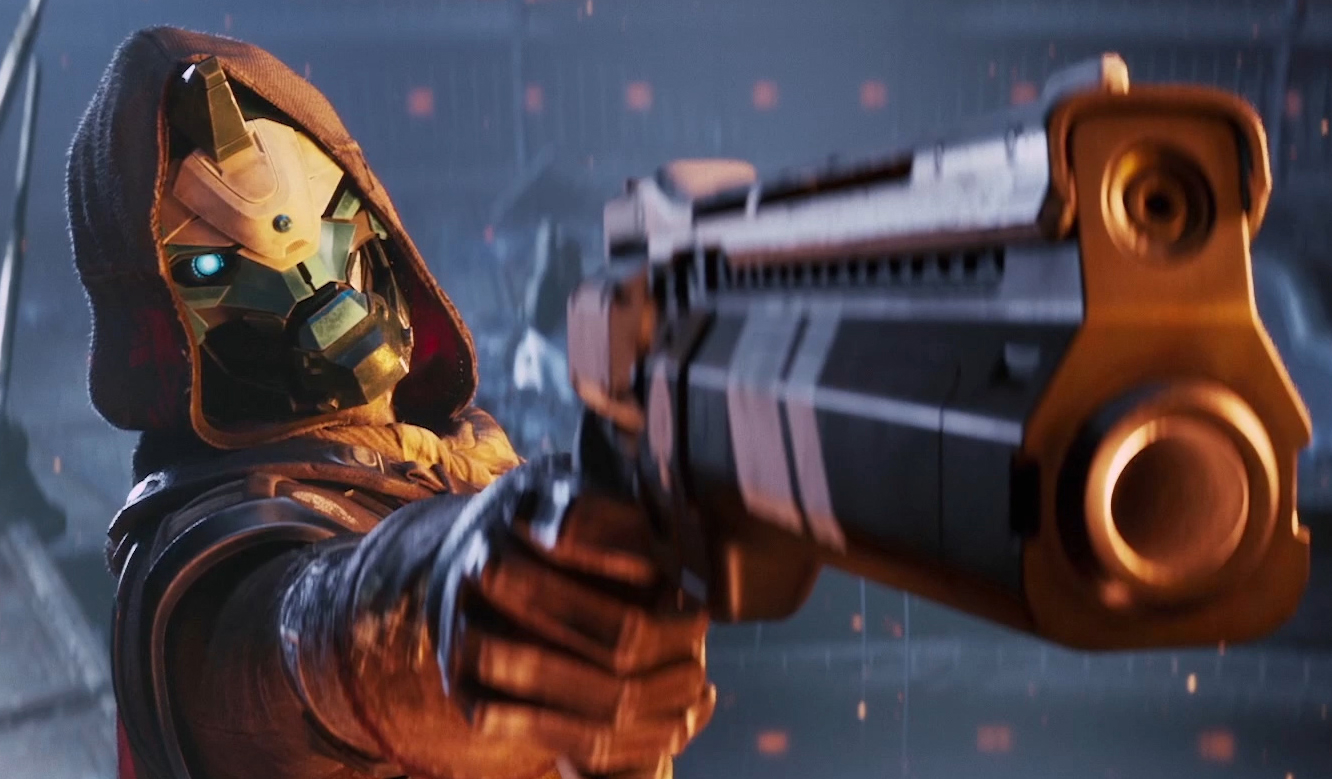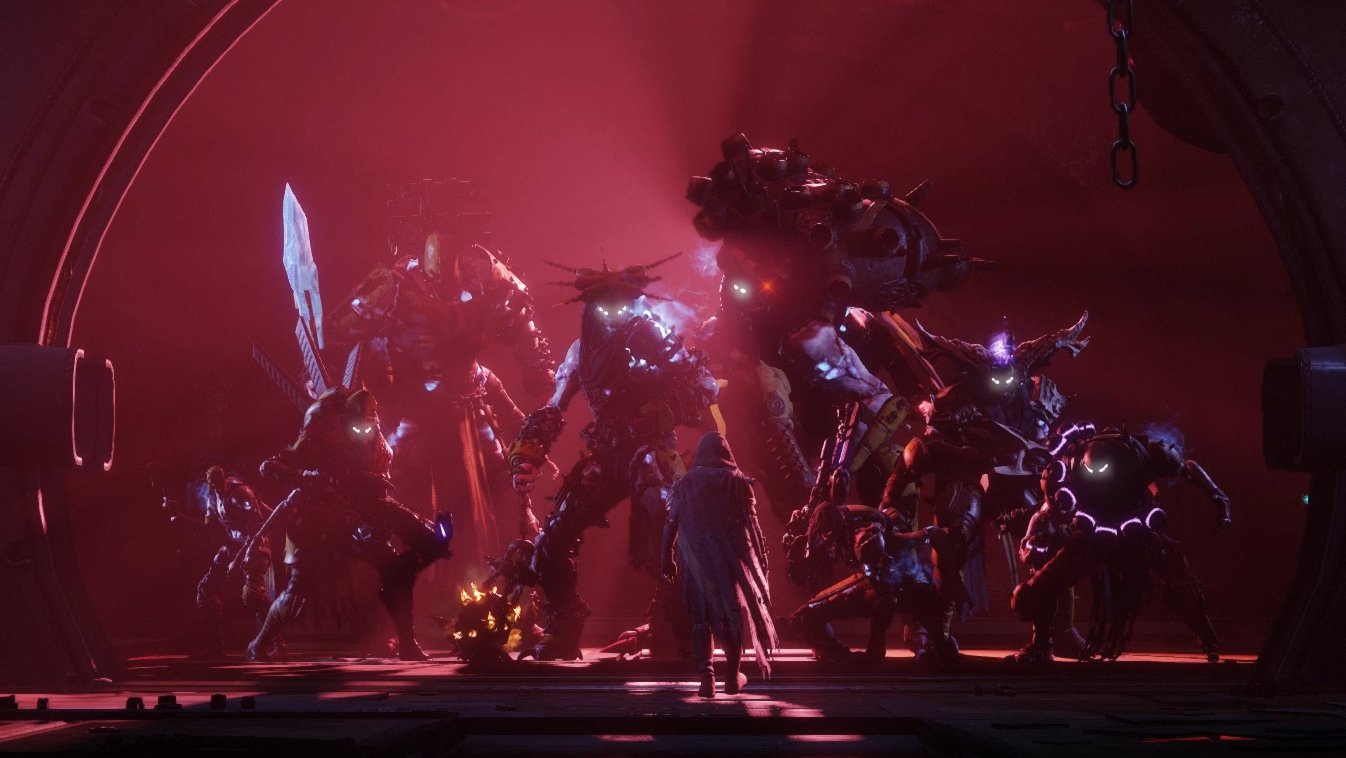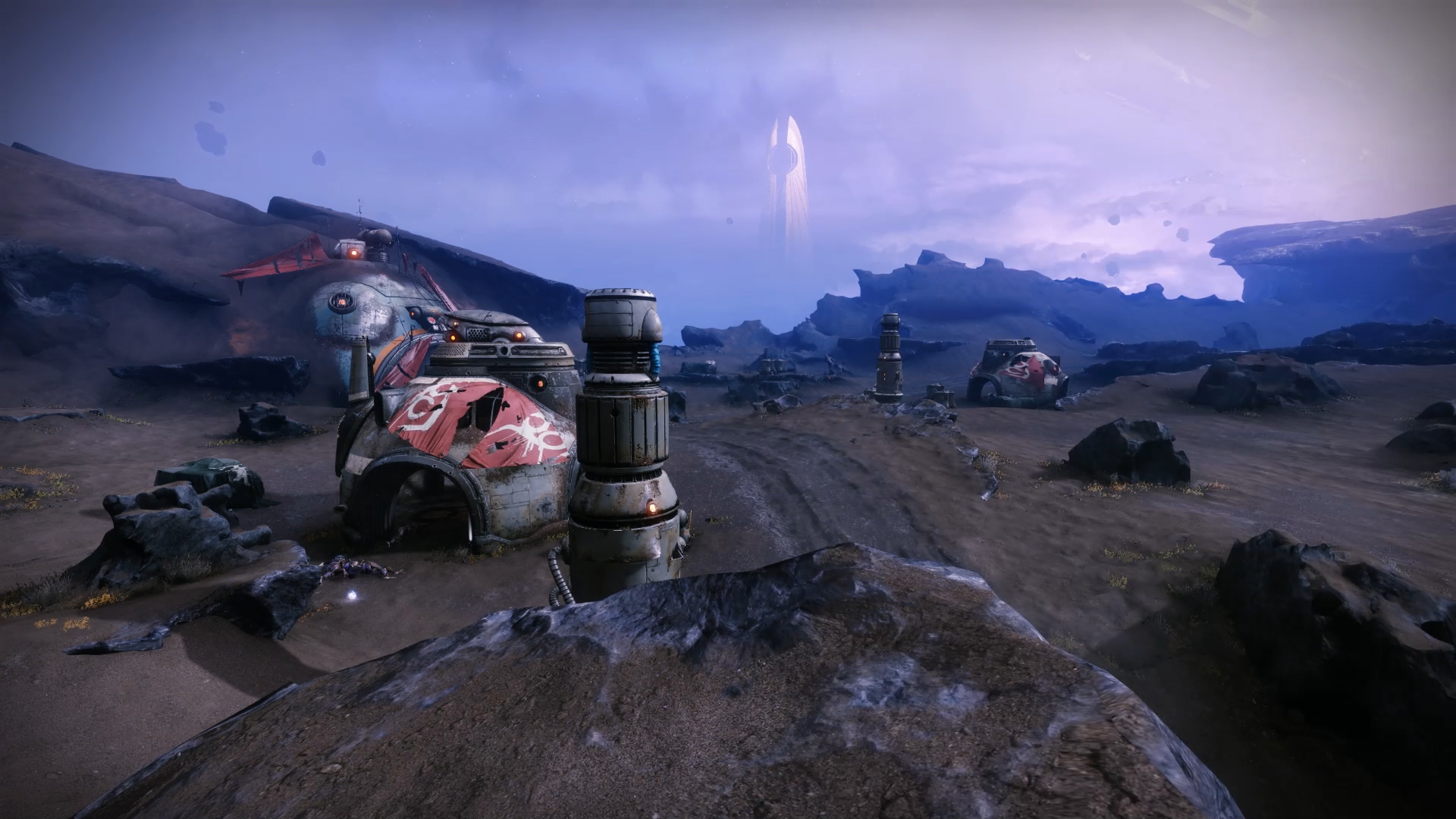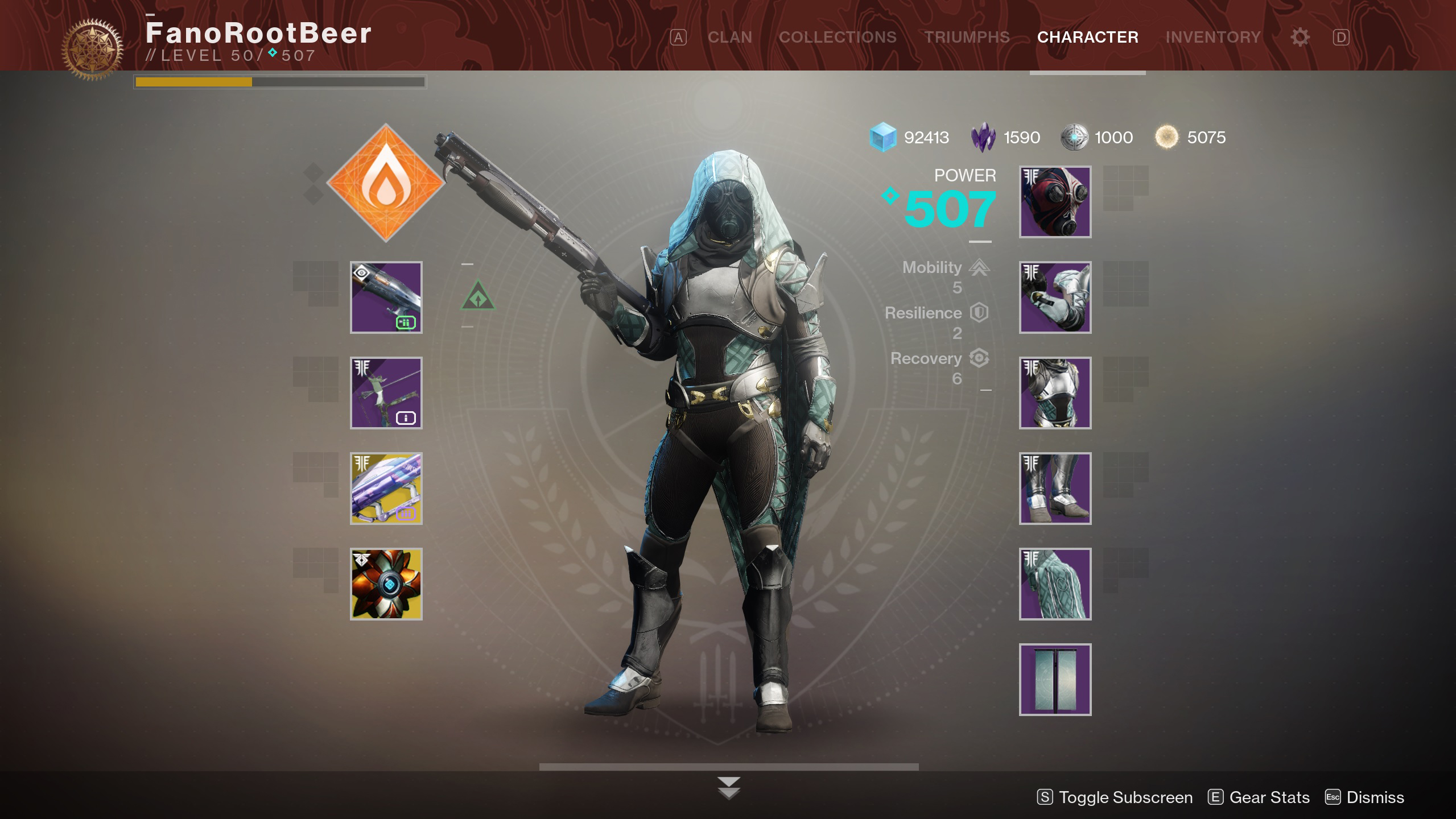Our Verdict
A fantastic course correction that makes Destiny 2 worth playing again. Here's hoping the momentum lasts.
PC Gamer's got your back
What is it? A big expansion for Destiny 2, Bungie's MMO-FPS hybrid.
Expect to pay: $40 / £35
Developer: Bungie
Publisher: Activision
Reviewed on: Intel i5-3570k @ 4.2 GHz, 16 GB RAM, GeForce GTX 1070, Windows 7
Multiplayer? Massively multiplayer(ish)
Link: Official site
Destiny 2 was not the game many players wanted at launch. It was a fun shooter, but it was shallow and painfully easy to put down. And in the past year, it's seen blunder after blunder after blunder, from lackluster DLC to baffling design decisions. So it's a relief to say that Forsaken is the second wind Destiny 2 needed. It's a full-fat expansion for Bungie's shared-world space opera of a shooter, and it comes with everything you'd expect: new story missions and quests, activities, enemies, game modes and environments. But Forsaken also delivers expanded RPG elements and quality of life changes which make Destiny 2 more compelling and less frustrating.
As you may have heard, the expansion opens with a big story beat: the death of Cayde-6, the chattiest of Destiny's Vanguard trio, a sort of PvE council of leaders. Cayde bites it at the hands of Uldren Sov and the eight Barons who lead the Scorn, a scrappy new enemy faction loosely based on the four-armed Fallen. So begins a good old-fashioned quest for revenge: The Man Who Shot Cayde-6 is somewhere out there in the badlands and you've got to go through his oddball gang of henchmen to get to him.
The bulk of the campaign consists of Baron hunts, which are more than simple boss fights. These hunts are unique missions which reflect the personalities and powers of the Barons. Though these ‘Adventure’ missions are pegged to different recommended power levels, you’re largely free to tackle them in the order you want.
I start with The Rider, the leader of a hoverbike gang. To lure her out, I hijack one of her precious ‘Pike’ vehicles and use it to slaughter some of her riders in her own territory. Thoroughly pissed, she rolls up in a souped-up Pike and challenges me to a death race through an acid-filled Thunderdome. As I dodge missiles, steal replacement Pikes, and evade the trail of fire that the Rider leaves in her wake, it occurs to me that this fight doesn't feel like Destiny at all. I mean, I've hardly shot anything with a regular gun. But it feels great. Memorable, flavorful, and above all, unlike anything I've done before, which also describes much of Forsaken.
The next Baron to really stand out is The Rifleman. Blind but for a single cybernetic eyeball, this bastard played an especially big role in Cayde's death by killing his resurrection-granting Ghost. As you may have deduced, he's a sniper, so what better way to get his attention than to take potshots at him from his own nest? Eventually he gets tired of playing tag and lures me to an arena where he and his army of hologram clones have the upper hand. I'm fairly under-leveled for this hunt, so keeping up with The Rifleman's clones and cutting them down to get to the real version isn't easy. But while the actual fight is a fun challenge, it's The Rifleman's dialogue that elevates the encounter. He's a marksman who delights in mocking my aim, which brings home one of my favorite parts of the Baron hunts: they're not just about killing the Barons, but beating them at their own game.
For the first time arguably ever, Destiny's story has become a bit ambiguous, and it's a massive improvement.
I beat The Rider in a death race and I out-shoot The Rifleman. Likewise, I take out The Mad Bomber by defusing his explosives and hunt The Machinist using a tank stolen from her personal arsenal. I'm genuinely surprised I can rattle these Barons off from memory, because going in I didn't expect to remember them at all, let alone so vividly. Incidentally, The Machinist is my favorite Baron, again because of what she has to say rather than the fight itself. She talks about the other Barons like they're family, and she reveres Uldren as a benevolent leader. The Barons stick together, she says. I can kill them, but never break them. Which is the first line in all of Destiny to ever give me pause. That's what the victims tell the bad guys, right?
For the first time arguably ever, Destiny's story has become a bit ambiguous, and it's a massive improvement. Destiny 2 has spent the past year telling players to fight The Darkness and save the solar system, but maybe these Guardians aren't the golden heroes they’re made out to be? After all, we’re reanimated corpses. Our enemies revile us as the zombie warriors that we technically are, and it feels like Bungie is finally ready to tap into that. This kernel of doubt is further explored in Uldren's storyline, which delivers a more conflicted, interesting villain than anything the series has seen so far.
Keep up to date with the most important stories and the best deals, as picked by the PC Gamer team.
New characters like Spider, a sarcastic and self-serving black market merchant, are likeable and help sell the Spaghetti Western-inspired setting. Even the optional quests are better than ever. The sidequest to reclaim Cayde-6's beloved hand cannon, the Ace of Spades, ends with a particularly touching moment and rewards one of the best guns in the game (with one of the best reload animations in history).
Forsaken's campaign ends with a boss fight out of left field, but then it wouldn't be Destiny without at least one bizarro moment, would it? It's still head-and-shoulders above every Destiny story before it, and I'm looking forward to seeing it continued in the post-game via the raid, Last Wish, which is due out on Friday, September 14 and which we'll undoubtedly discuss more in the coming weeks.
Back to the new grind
As Cayde's friend Ikora is fond of saying, the end is just the beginning. Forsaken only ramps up once you finish the story. I quickly reached the soft level cap of 500 and began the slow climb to the hard cap of 600. Right now I'm not even halfway there, but I can already tell you that the leveling experience is way more enjoyable in Forsaken. For starters, there are just more things to do. With weekly and daily challenges, new dungeon-like Lost Sectors and Strikes, and a virtually endless stockpile of subquest-esque bounties, I can hardly keep up.
A staggering range of potential loadouts is suddenly at my fingertips.
There are over two dozen challenges to complete each week on each of my three characters. Many of these are returning challenges, like completing Strikes, PvP matches and various activities on specified planets. But Forsaken introduces many new challenges, and at a cadence that keeps you topped off on goals. I can replay story missions for loot now, which is a fun way to revisit Destiny 2's genuinely great missions. Or I can hunt down high-priority targets scattered around the solar system, many of which are quite high-level. And every day I log in, I'm guaranteed at least one powerful drop from whatever I choose to do that day. More difficult challenges reward bigger power jumps, but the smaller, easier ones are just as important and exciting because they give me short-term goals to tide me over until the next big challenge. Most importantly, they mean I can't burn through a week's loot in one day like I used to.
Two months ago I was desperate for reasons to boot Destiny 2 up. Now I'm struggling to decide what to tackle first. It's a fantastic problem to have, and it's much easier to check what activities are available thanks to Forsaken's refined user interface, which neatly sorts and labels the stuff that drops the most powerful loot. That said, I do worry for activities like strikes and the new Blind Well horde mode. They're both fun, but unless you have a specific challenge for them they're pretty much pointless to do since they won't raise your level, so interest may fall off quick. This is true in other areas as well, like the otherwise stellar Gambit mode wherein players compete to kill enemies and also occasionally each other. It's not as noticeable now since players are still loaded with challenges and bounties to chase, but once most players have acquired decent enough versions of the gear from each of these activities, interest is likely to wane.
Above: I lucked out and received the new exotic rocket launcher the Two-Tailed Fox. It shoots two rockets at once, and more importantly, the lock-on icon for its sight is an angry neon fox.
I started hoarding guns and armor the moment I finished the story because gear is actually exciting now that it drops with randomly rolled perks. Even if new items don't raise my level, at least every drop is another shot at a better roll. Getting a ‘god roll’ combo of perks like Outlaw (which gives near instant reloads after headshots) and Rampage (which stacks damage on kills) for a sweet hand cannon feels almost as exciting as finding one of the game’s bespoke Exotic weapons.
I'm particularly obsessed with armor. Some armor perks make ammo easier to come by, some improve your abilities, some buff the performance of specific weapons, and we haven't even gotten to the mods you can socket. Coupled with the weapon changes that preceded Forsaken and made weapons like shotguns and sniper rifles available in every weapon slot, a staggering range of potential loadouts is suddenly at my fingertips, so I can't bear to part with anything that might be useful down the line.
I'm also loving the new bows, for example, which are every bit as snappy as I'd hoped. I like pairing them with shotguns and rockets, so I've been rocking a helmet that makes bows more accurate, gloves that give me more shotgun ammo, a chest piece that lets me hold more rockets, and a class item that gives me more heavy weapon ammo. I plan to build a perfect loadout for all of my setups, and I know I can if I put the time in. The hard part is building a perfect and fashionable loadout, which is difficult given how small Forsaken's loot pool currently is. I'm happy to move on from Destiny 2's year one equipment, but I desperately wish year two had more variety. I must've looted 20 Edge Transit grenade launchers at this point, and my armor collection is already starting to repeat itself.
Even so, it's nice to want to grind again, and to be doing so using new subclass trees. Forsaken didn't add new subclasses per se, but the supers and ability nodes—clusters of skills that define your play style—that each subclass gained in the expansion feel like new classes in their own right. They're more creative than the original subclasses, and many of them feel more powerful.
My favorite so far is the new Hunter subclass tree Way of a Thousand Cuts. Hunter's original Gunslinger branches are mashed-together messes of super and grenade abilities with no real synergy to them. In contrast, the Way of a Thousand cuts branch has a proper combo built into it: my flaming throwing knives recharge my dodge ability and my dodge recharges my throwing knives. If I get multiple kills with my knives, they can also reduce their own cooldown to a frankly absurd degree. And if I equip an old, previously useless piece of Exotic armor called Young Ahamkara’s Spine, I can add fast-charging sticky grenades into the mix for even stronger synergy, enabling an endless chain chain of knives and nades. Get good and you can run whole missions without firing a shot.
And then there’s Hunter's new Blade Barrage super. This involves a volley of exploding throwing knives which can decimate groups of weak enemies or shred singular bosses. It's flexible and incredibly fun—I defy you not to smile after melting dozens of enemies in a flaming Olympic twirl. Much the same is true of the other supers and new subclass paths too. The new void Titan and its buff-giving shield super will surely be invaluable in endgame content, and I'm eager to test the dedicated support Warlock tree which can heal and empower allies. Forsaken doubled the number of supers in Destiny 2, so there are lots of cool combinations to try. I get the feeling that several of the original supers and subclasses will still be relevant too, though I don't think I'll stray from the Way of a Thousand Cuts for some time.
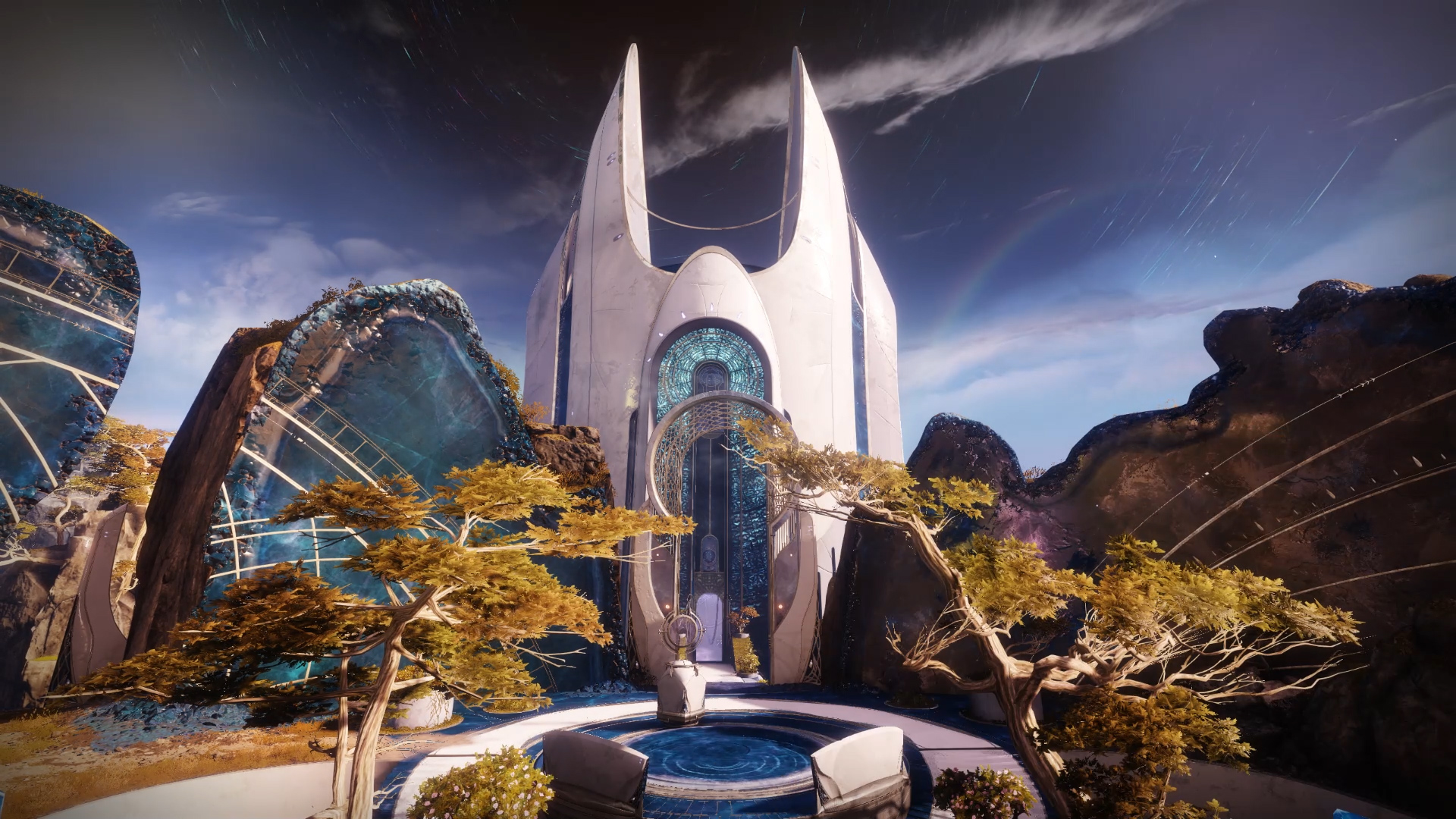
Room to grow
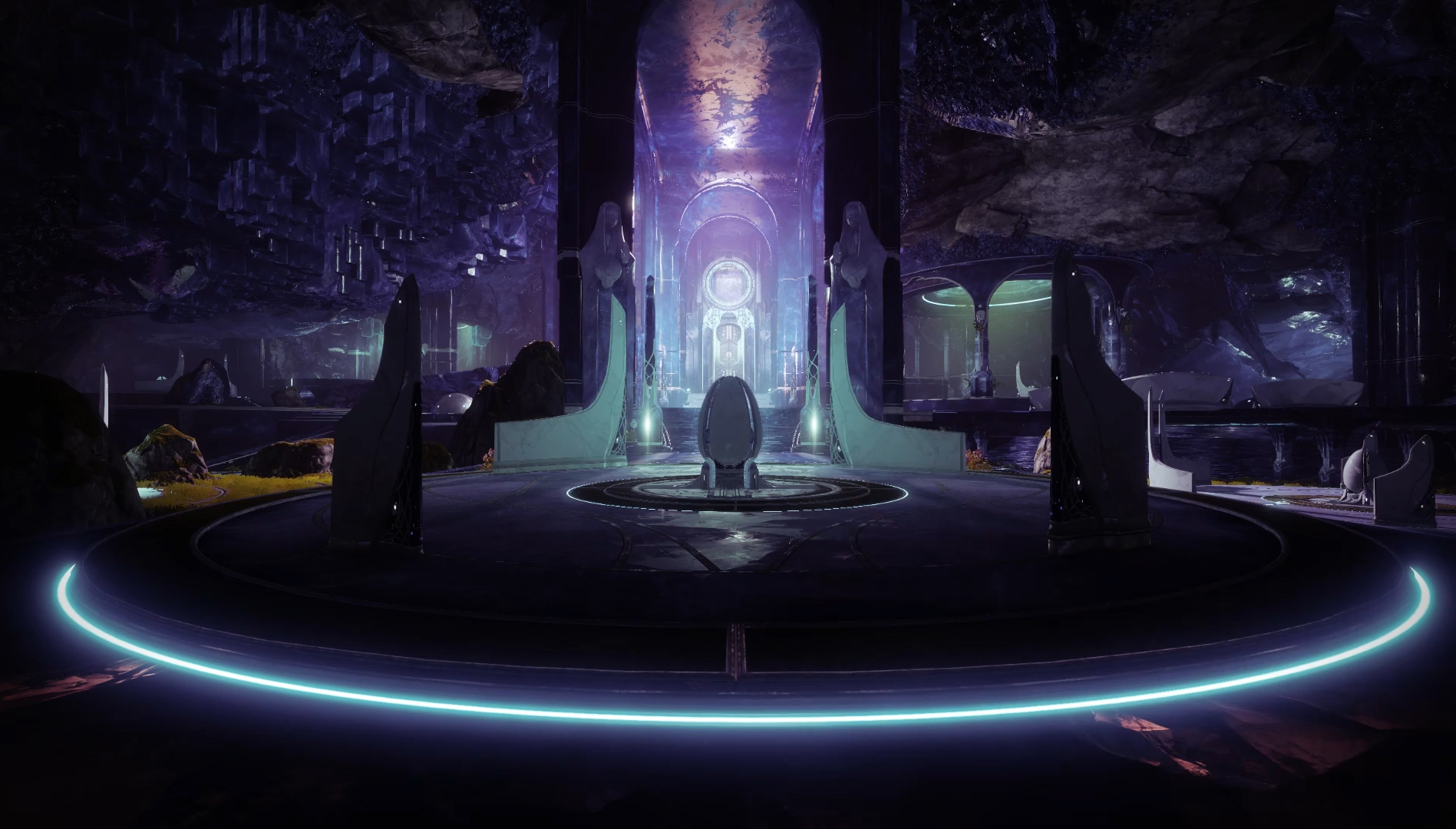
The Dreaming City is more than just a looker. It's also filled with new, punishing activities, from new public events to the Blind Well horde mode. The City is an incredibly high-level area, so even basic activities are difficult. I'm especially fond of the new Ascendant Challenges, which whisk you away to Taken voids with unique puzzles and enemies. You can also earn 'gifts' to exchange for special weapons and armor sets. These sets look great and help sell the City as an endgame destination.
While most of the campaign is set in the Tangled Shore, a Western frontier made from asteroids lashed together with chains and infested with every variety of bad guy, my grinding has taken me all over the solar system. That said, the main attraction is the Dreaming City, Forsaken's go-to end-game zone and the best source of powerful loot. Not that I need a reason to go to the Dreaming City, mind, because it's worth it for the views and atmosphere alone. Stepping out of the mist and onto its eerie shore is like walking into an airbrushed ‘70s prog rock album cover. The Dreaming City is far and away the most beautiful environment in Destiny—no small praise, given the quality of the art elsewhere—and easily one of the best-looking vacation spots in all of games.
The City's lush green mountains are contrasted by deep blue crystalline rock and dominated by towering alabaster structures, while the outskirts are draped in ominous fog. The guts of the city are an irresponsibly detailed labyrinth of marble statues and catacombs home to countless secrets which players scour for every day. The whole thing also has the kind of cod-religious, portentous soundtrack that could only come from the makers of Halo. And according to Bungie, the Dreaming City's layout and activities will change as new content is released. I'll take any excuse to spend more time there, and I can't wait to see what effect the raid has.
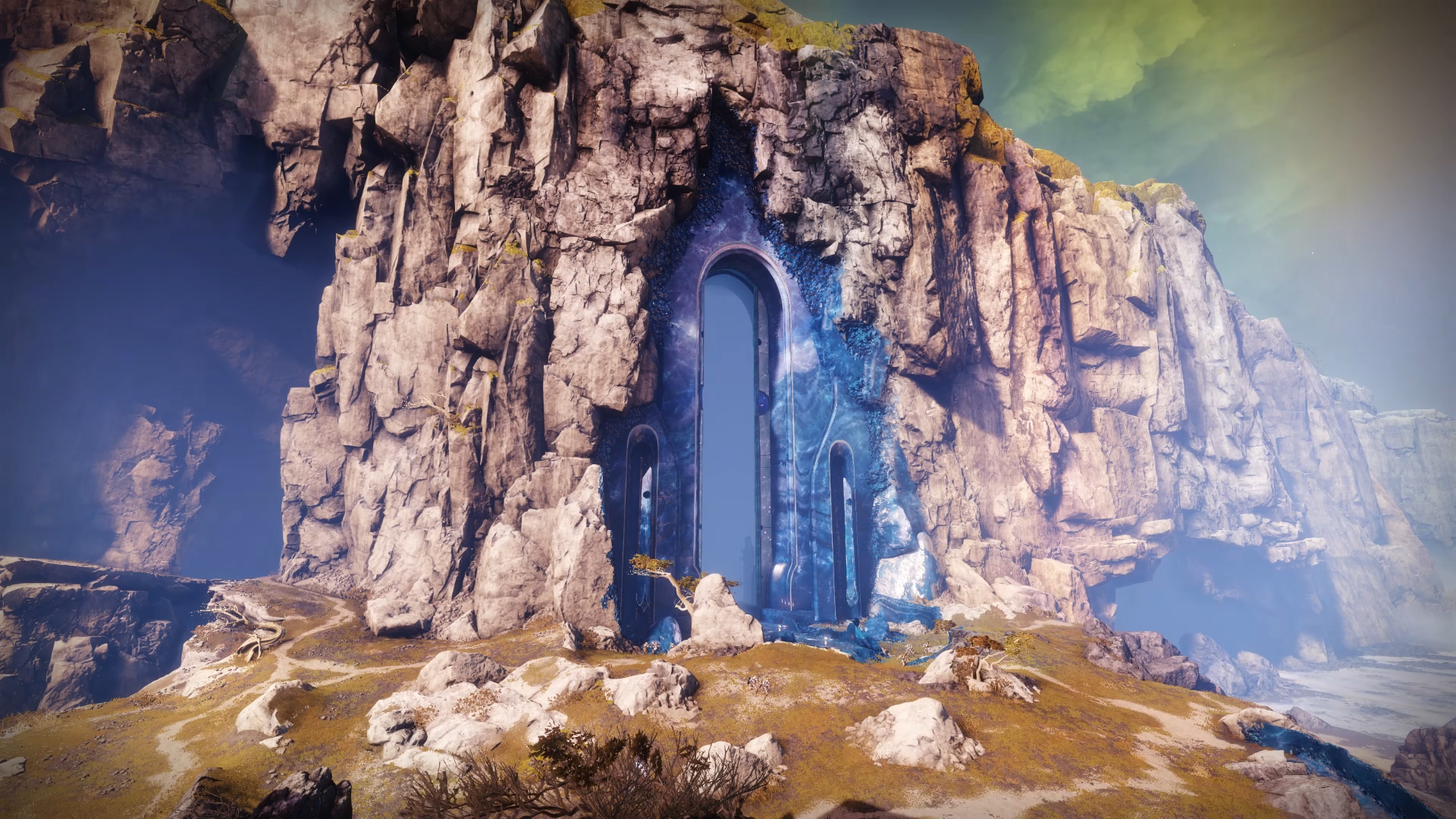
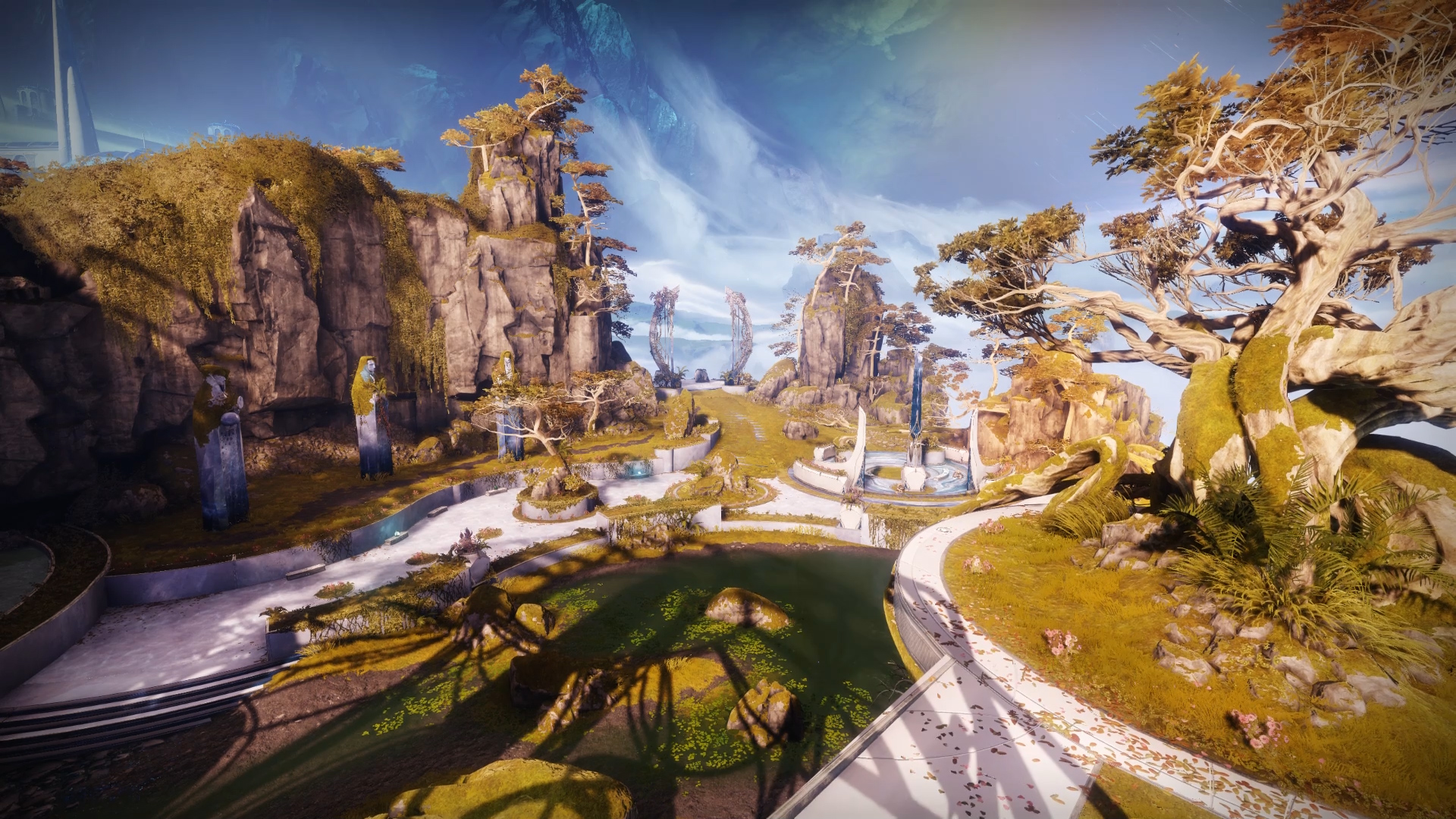
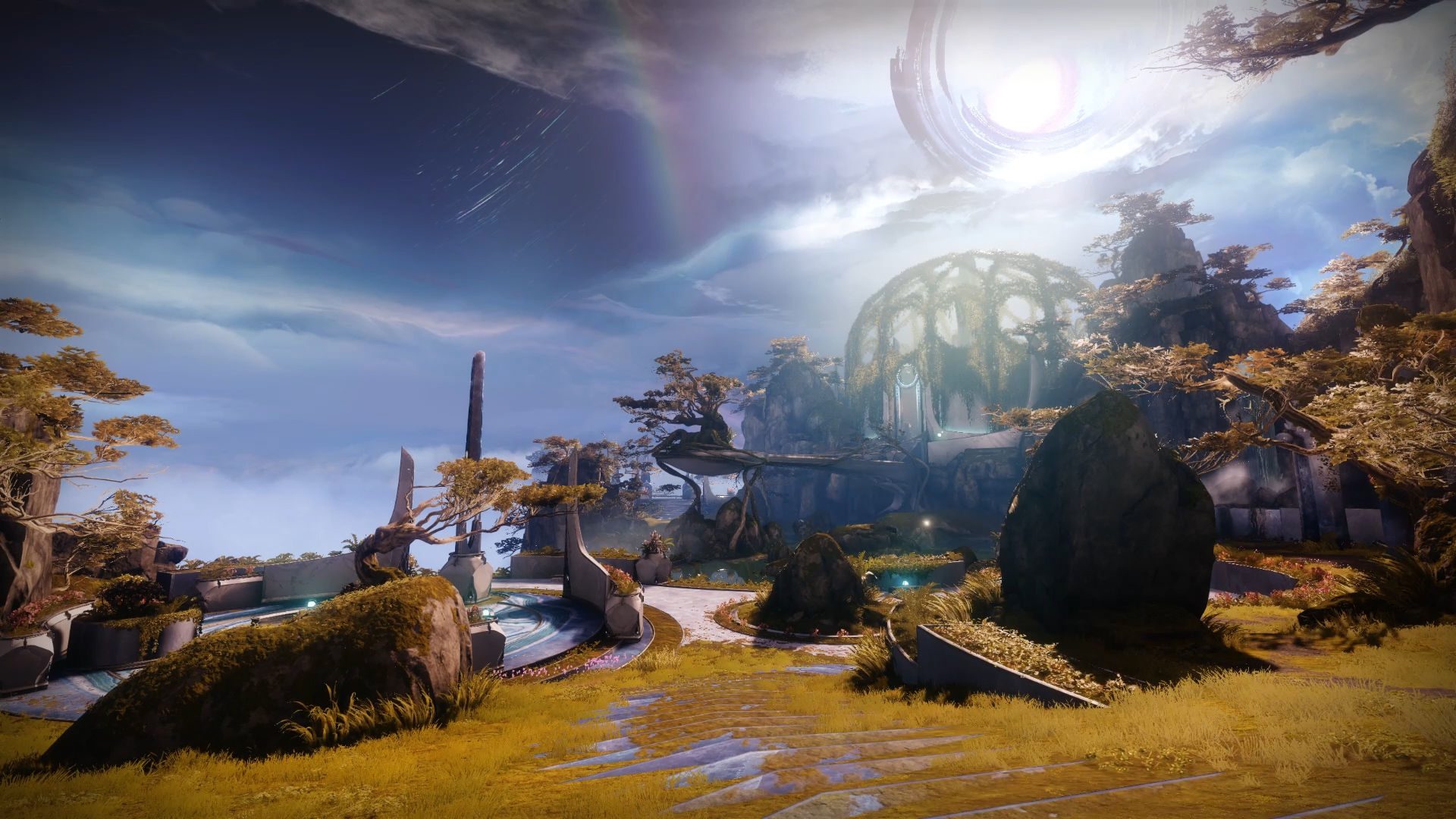
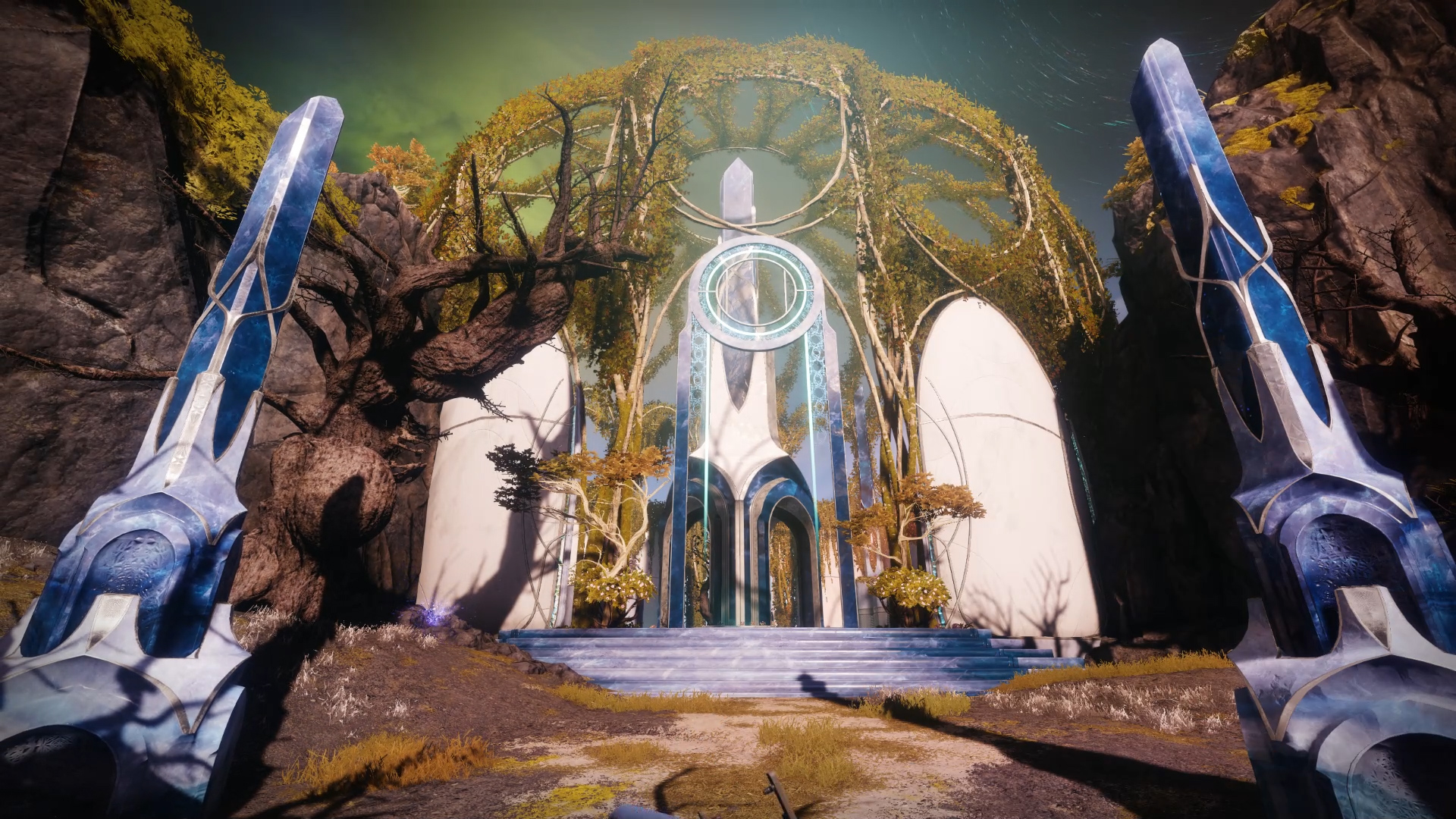
The trouble is, hanging out with friends in the Dreaming City is a bit of a hassle since Destiny 2 still lacks appropriately-sized parties. For some unknown reason—possibly a technical one, to be fair—you're still limited to having three people in your fireteam outside of raids and PvP, which is a huge bummer since exploring the city with buddies is a blast. To say nothing of the Blind Well horde activity, which is way more fun with more people. Destiny 2's previous expansion, Warmind, ran into the exact same problem with its Escalation Protocol mode, and we have made zero progress since.
Then there's the obvious pine cone in the fruit salad: PS4-exclusive content. PC Destiny 2: Forsaken players will miss out on a new strike, an Exotic trace rifle, and three armor sets for the next year or so. Platform-exclusive content in multiplatform games is inherently annoying, but considering Forsaken only added a handful of new strikes and the trace rifle count is already incredibly low, these omissions are especially disappointing.
Forsaken is still fresh out of the gate and has a lot to prove. We have a raid to see, for one, and the true test of any expansion is how it feels after a month or two. At the same time, it has already proven a lot. It had a lot of mistakes to correct, and between an engaging campaign and an engrossing endgame, it's managed to right almost all of them. I'm coming up on 100 hours logged in the expansion and I don't even feel close to done, nor have I slowed down a bit. My friends and I have been burning the midnight oil and playing almost every night, which would've been unthinkable before. After a precarious first year, I'm finally enjoying Destiny 2 again. It feels good to have it back.
A fantastic course correction that makes Destiny 2 worth playing again. Here's hoping the momentum lasts.

Austin freelanced for PC Gamer, Eurogamer, IGN, Sports Illustrated, and more while finishing his journalism degree, and has been a full-time writer at PC Gamer's sister publication GamesRadar+ since 2019. They've yet to realize that his position as a staff writer is just a cover-up for his career-spanning Destiny column, and he's kept the ruse going with a focus on news, the occasional feature, and as much Genshin Impact as he can get away with.
